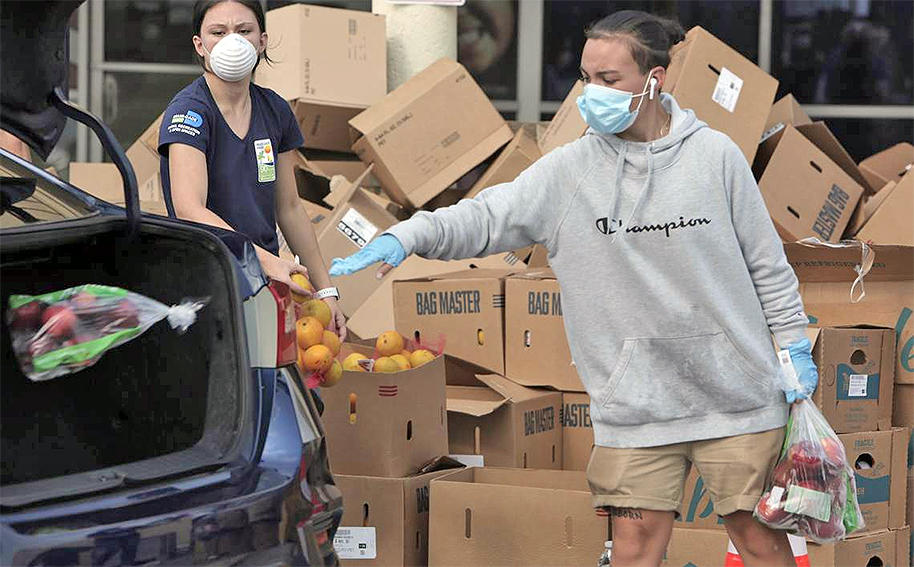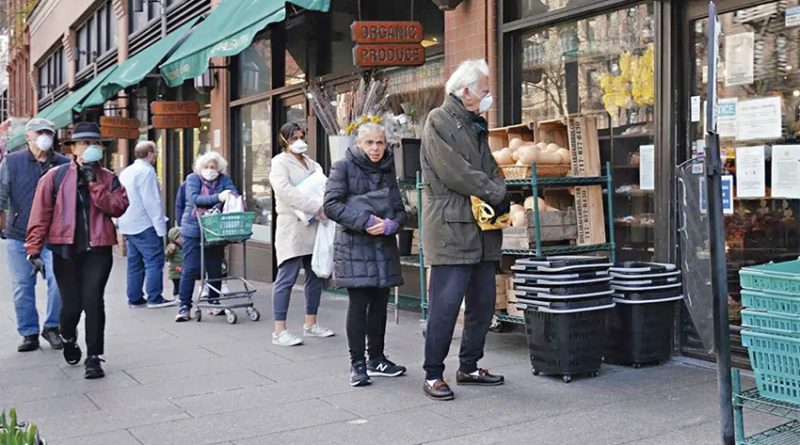COVID-19 ha mostrado las profundas desigualdades en que vivimos / COVID-19 has demonstrated the profound inequalities in which we live
Por Maribel Hastings y David Torres | WASHINGTON, DC
Los desastres tienen la mala costumbre de exponer a la vista de todos los múltiples problemas que muchos sabemos que existen, pero que otros, por conveniencia política y económica, prefieren seguir barriendo debajo de la alfombra. Es una costumbre típica no solamente de las sociedades que lo tienen todo, sino incluso de las que aun en sus carencias quisieran no tomar en cuenta las posibles soluciones, sino su perpetuación para seguir teniendo algo de qué hablar en sus discursos oficiales para supuestamente “erradicar” dichas anomalías.
En Puerto Rico, por ejemplo, el huracán “María” desnudó la realidad de los muchos Puerto Ricos que existen, particularmente la de los privilegiados a quienes nada los toca y la pobreza que arropa a una enorme parte de la población, especialmente al interior de la isla. El huracán arrasó y dejó al desnudo la desigualdad social y económica que al sol de hoy sigue afectando a su población.
No menos evidentes son los casos de diversos países de América Latina, donde la pandemia ha venido a exacerbar profundas inequidades, empezando por el sector de la salud, cuyas carencias hacen peligrar la atención requerida en caso de que la curva de contagios siga expandiéndose y no haya suficientes camas de hospital ni equipo médico para atender a los infectados. Las escenas de cadáveres en las calles de Ecuador nos recuerdan que el COVID-19 es una realidad que nos atañe a todos enfrentar.
Y a nivel mundial, pero sobre todo en Estados Unidos, autoproclamado faro de la democracia y las oportunidades, el coronavirus ha expuesto las enormes brechas que existen entre las diversas clases sociales, los diferentes grupos étnicos y los estatus migratorios que conforman esta nación.
Así, los reportes de que en ciertas zonas del país la mayor parte de los contagios y muertes afectan a minorías como los hispanos y los afroamericanos no debe sorprender a nadie, toda vez que son grupos con menos acceso a seguro médico y plagados de padecimientos preexistentes, como obesidad, diabetes o asma, que complican cualquier cuadro médico, no solo por COVID-19 sino por cualquier otra enfermedad. Lo mismo puede decirse de un amplio sector de anglosajones de escasos recursos económicos que ejemplifican, por su parte, las abismales desigualdades económicas entre los pocos que tienen demasiado y los muchos que se pelean por migajas.
Y si de desigualdades se trata, cómo pasar por alto las desigualdades migratorias. Miles de inmigrantes sin estatus migratorio o con estatus temporales llevan a cabo labores esenciales en el rubro de la salud. Se desempeñan en enfermería, son doctores, técnicos, personal de emergencias médicas, paramédicos o cuidadores. Por ejemplo, los Dreamers conforman un grupo importante en este sector, donde unos 27,000 están ahora mismo en el frente de esta ardua batalla médica, con el riesgo de contagiarse y sin la garantía de que después de que todo esto termine su situación migratoria se arregle. Lamentablemente, sobre sus cabezas pende la decisión final sobre el programa DACA por parte de la Suprema Corte de Justicia, agravando de este modo la ansiedad de miles de jóvenes y sus familias que han demostrado plenamente su utilidad social en el complejo engranaje de Estados Unidos. (America’s Voice)

COVID-19 has demonstrated the profound inequalities in which we live
By Maribel Hastings and David Torres | WASHINGTON, DC
Disasters have the bad habit of exposing, to all, the multiple problems that many of us already knew existed, but others, out of economic and political convenience, prefer to keep sweeping under the rug. This is typical not only in societies that have everything, but also in those who prefer to perpetuate their shortcomings, in order to continue having something to talk about in official discourse (about supposedly “eradicating” said anomalies), rather than actually achieving solutions.
In Puerto Rico, for example, Hurricane María laid bare the reality that exists among many Puerto Ricans, particularly the dichotomy between the privileged ones, who are bothered by nothing, and the poverty that cloaks a large part of the population, especially in the interior of the Island. The hurricane razed and denuded these social and economic inequalities that, even today, continue affecting the population.
No less evident are the examples of different Latin American countries where the pandemic has come to exacerbate profound inequities, starting with the health sector, whose deficiencies have jeopardized the response such that the contagion curve continues to expand and there are not enough hospital beds nor medical equipment to care for infected people. The scenes of bodies in the streets of Ecuador remind us that COVID-19 is a reality that we all must face.
And at the global level, but especially in the United States, the self-proclaimed outpost of democracy and opportunity, the coronavirus has exposed the enormous gaps that exist between diverse social classes, different ethnic groups, and the various immigration status that comprise this nation.
Reports that in certain regions of the country, the largest share of affected people and deaths comes from minorities such as Hispanics and African Americans, must surprise no one, since these groups have less access to medical insurance and are plagued by pre-existing conditions such as obesity, diabetes, or asthma, which complicate any medical chart, not only because of COVID-19 but any other illness. The same can be said for a large swath of white people with scarce economic resources who exemplify, for their part, the abysmal economic inequalities among the few who have a lot and the many who fight over crumbs.
And if we’re talking about inequalities, we cannot forget the migratory inequalities. Thousands of immigrants without immigration status, or with temporary status, carry out essential work in the health arena. They work in nursing, and as doctors, technicians, emergency medical personnel, paramedics, or as caregivers. For example, the Dreamers make up an important group in this arena, where some 27,000 are now on the frontlines of this dangerous medical battle, at risk of contracting the virus and without the guarantee that after all of this is over, their immigration status will be regularized. Unfortunately, hanging over their heads is the U.S. Supreme Court’s final decision on the DACA program, aggravating the anxiety of thousands of young people and their families who have plainly demonstrated their social utility in the complex machinery of the United States. (America’s Voice)


 (1) (2).jpg)


Debe estar conectado para enviar un comentario.